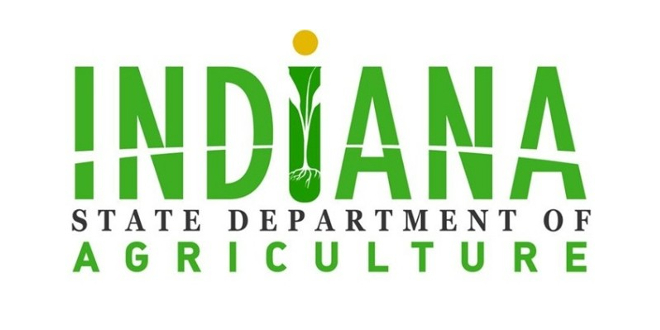INDIANAPOLIS (July 2, 2020) — According to a recent survey, Indiana farmers planted 950,000 acres of cover crops in 2019.
Cover crops are known for their environmental benefits and, with the exception of corn and soybeans, are planted on more acres than any other commodity crop in Indiana. They are typically planted in the fall after harvest and designed to keep roots in the ground throughout the winter, which improves soil health and helps filter water off of the farm.
Due to the late spring planting in 2019 and the subsequent delayed harvest, some cover crops were not able to be planted due to time constraints and unfavorable weather.
As a result of the cover crops planted last year, it is estimated that 1.2 million tons of sediment was prevented from entering Indiana’s waterways, along with 3 million pounds of nitrogen and 1.5 million pounds of phosphorus. That’s enough sediment to fill more than 350 Olympic-size swimming pools.
No-till or strip-till acres leave residues and soils undisturbed which allow the soil to hold in vital nutrients. The fall transect data for 2019 shows 71% of Indiana’s corn acres were no-till or strip-till and 76% of soybean acres were no-till or strip-till. This fall transect data doesn’t quantify any spring tillage that may occur.
“When we talk about soil health we are talking about a fundamental shift in the way we think about and care for our soil,” said Jerry Raynor, Indiana NRCS State Conservationist. “Soil health alone does not necessarily treat resource concerns. It’s the continued use of a suite of soil health practices as part of a conservation cropping system that leads to long-term benefits. We are seeing that fundamental shift in our Indiana farmers each year and our transect data proves it.”
ISDA Director Bruce Kettler is looking forward to the years ahead for conservation in Indiana.
“Indiana is one of the top conservation minded states and each year Hoosier farmers go above and beyond to increase soil conservation on their farms,” said Kettler. “It is vital that Indiana remain strong in this area, and thanks to our committed farmers and the Indiana Conservation Partnership, I am confident that it will.”
Roger Wenning is a Decatur county farmer who keeps soil conservation top of mind. Wenning operates his farm utilizing 100% no-till practices and cover crops.
“When you combine cover crops and no-till, one plus one doesn’t equal two; it equals three. What I mean is that the systems feed off each other,” Wenning explains. “No-till preserves organic matter in the soil and cover crops continue to build organic matter. Put the two together and you keep what you already have and actually multiply it.”
The cover crop and tillage transect is a visual survey of cropland in the state. It’s conducted every year in the fall and following spring by members of the Indiana Conservation Partnership, including the USDA Natural Resources Conservation Service, the Indiana State Department of Agriculture, Indiana’s Soil and Water Conservation Districts and Purdue Extension, as well as Earth Team volunteers, to show a more complete story of the state’s conservation efforts. Due to the implications of the novel coronavirus some of the 92 Indiana counties were missing cover crop data for the 2019 year, in those counties the data used was their individual five year averages.
Click here or visit www.isda.in.gov to see the results from the survey.
 WYRZ.org 98.9 WYRZ – The Voice of Hendricks County
WYRZ.org 98.9 WYRZ – The Voice of Hendricks County





